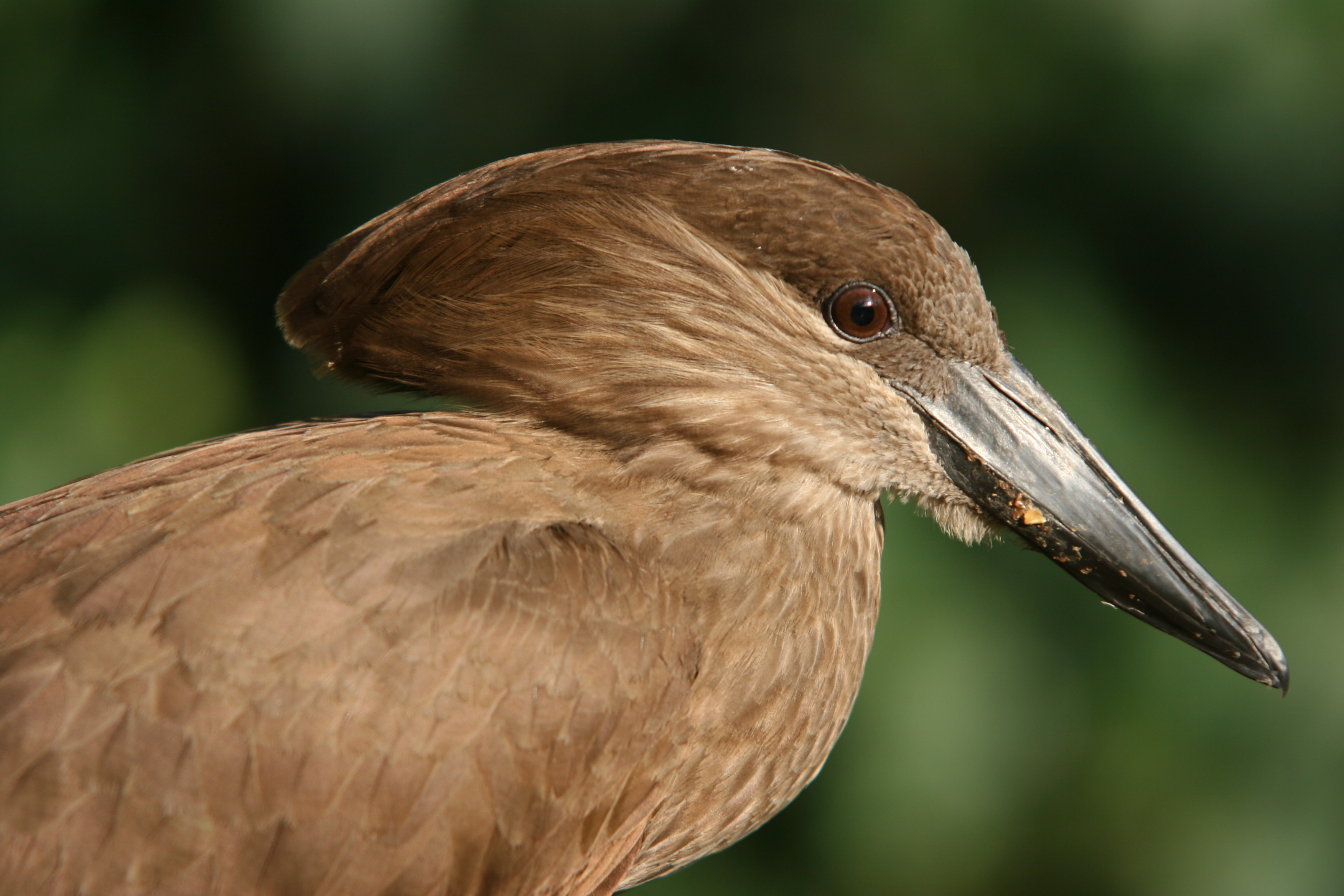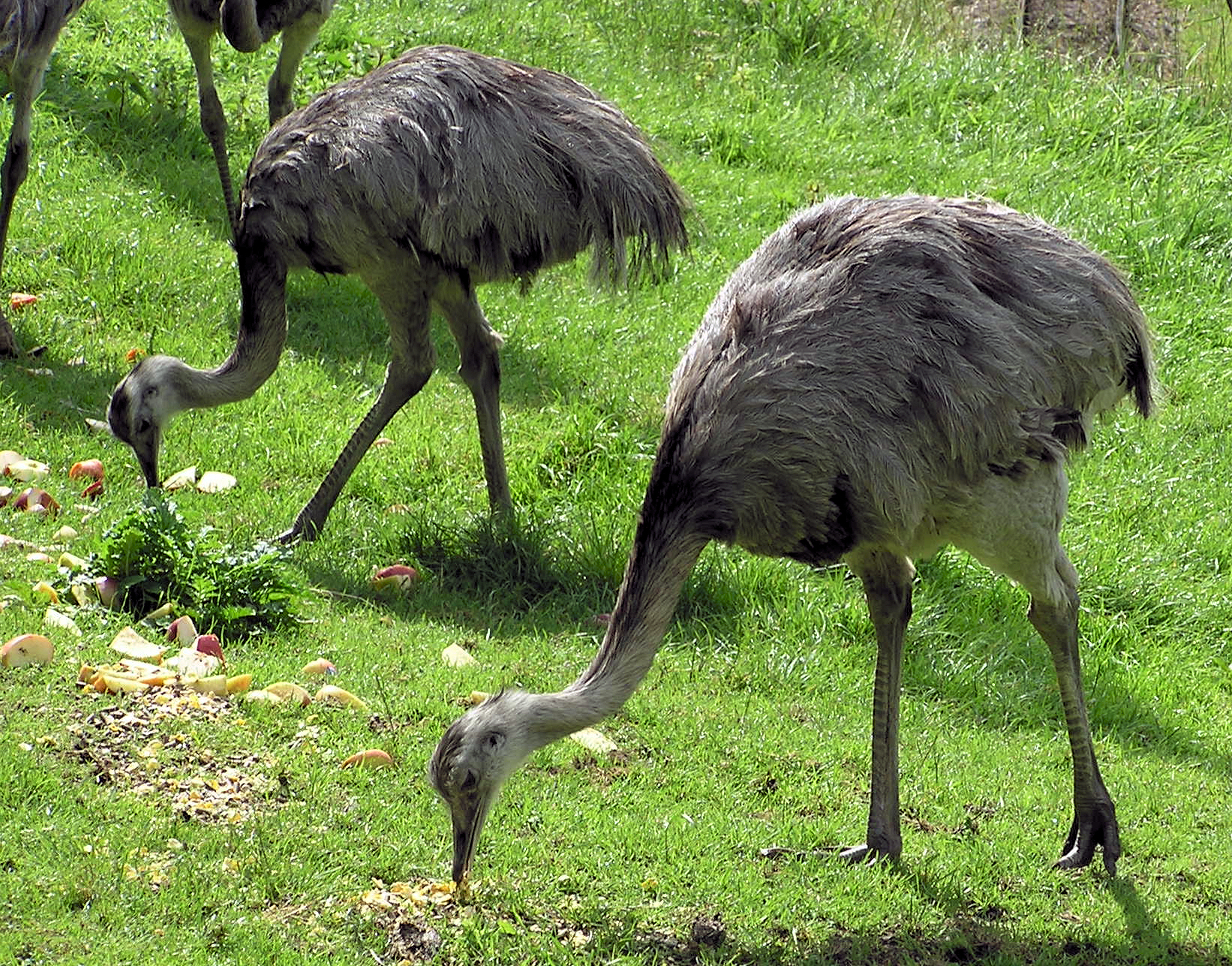|
Balaenicipitidae
Balaenicipitidae is a family of birds in the order Pelecaniformes, although it was traditionally placed in Ciconiiformes. The shoebill is the sole extant species and its closest relative is the hamerkop (''Scopus umbretta''), which belongs to another family. Species from the Ciconiiformes and Balaenicipitidae family have been found in Kenya, Uganda, Tanzania, and parts of East Africa. It has the following genera: *'' Balaeniceps'' *†''Goliathia ''Goliathia'' is an extinct genus of bird from the Early Oligocene. The holotype is an ulna recovered from lower beds of the Jebel Qatrani Formation in Faiyum Governorate, Egypt. Initially thought to be a heron, an additional bone, a tarsom ...'' (might belong in ''Balaeniceps'') *†'' Paludiavis'' Common characteristics * A sharp hooked tip to the upper beak * A furrow in the upper beak below the nasal openings * An ossified septum * Vestigial or absent expansor secundariorum muscle References Kasoma, P. M. B., & Pomeroy, ... [...More Info...] [...Related Items...] OR: [Wikipedia] [Google] [Baidu] |
Pelecaniformes
The Pelecaniformes are an order of medium-sized and large waterbirds found worldwide. As traditionally (but erroneously) defined, they encompass all birds that have feet with all four toes webbed. Hence, they were formerly also known by such names as totipalmates or steganopodes. Under this obsolete definition, the Fregatidae (frigatebirds), Sulidae (gannets and boobies), Phalacrocoracidae (cormorants and shags), Anhingidae (darters), and Phaethontidae (tropicbirds) were included in the Pelecaniformes. Subsequent molecular and morphological studies indicate they are in fact not close relatives to "true" Pelecaniformes, and they are now placed in their own orders, Suliformes and Phaethontiformes, respectively. Pelecaniformes as currently defined comprise the pelicans, shoebill and hamerkop, which form a clade within the order (suborder Pelecani), along with herons ( Ardeidae) and ibises and spoonbills ( Threskiornithidae); the relationships between Pelecani and the othe ... [...More Info...] [...Related Items...] OR: [Wikipedia] [Google] [Baidu] |
Shoebill
The shoebill (''Balaeniceps rex''), also known as the whale-headed stork, and shoe-billed stork, is a large long-legged wading bird. It derives its name from its enormous shoe-shaped bill. It has a somewhat stork-like overall form and has previously been classified with the storks in the order Ciconiiformes based on this morphology. However, genetic evidence places it with pelicans and herons in the Pelecaniformes. The adult is mainly grey while the juveniles are more brown. It lives in tropical East Africa in large swamps from South Sudan to Zambia. Taxonomy The shoebill may have been known to Ancient Egyptians but was not classified until the 19th century, after skins and eventually live specimens were brought to Europe. John Gould very briefly described it in 1850 from the skin of a specimen collected on the upper White Nile by the English traveller Mansfield Parkyns. Gould provided a more detailed description in the following year. He placed the species in its own genus ... [...More Info...] [...Related Items...] OR: [Wikipedia] [Google] [Baidu] |
Paludiavis
''Paludiavis '' is a genus of extinct waterbirds in the Balaenicipitidae family. It was described from fossil tarsometatarsus pieces, one found in the Upper Miocene series of the Shivalik Formation in northern Pakistan and the other, a 1972 find that is also from the Upper Miocence, of Tunisia Tunisia, officially the Republic of Tunisia, is a country in the Maghreb region of North Africa. It is bordered by Algeria to the west and southwest, Libya to the southeast, and the Mediterranean Sea to the north and east. Tunisia also shares m ..., referred by Colin Harrison and Cyril Walker to the same genus. The genus consists of only one species, ''Paludiavis richae''. References Prehistoric birds Cenozoic birds of Africa Cenozoic birds of Asia Miocene birds Fossil taxa described in 1982 Pelecaniformes {{Pelecaniformes-stub ... [...More Info...] [...Related Items...] OR: [Wikipedia] [Google] [Baidu] |
Ciconiiformes
Storks are large, long-legged, long-necked wading birds with long, stout bills. They belong to the family Ciconiidae, and make up the order Ciconiiformes . Ciconiiformes previously included a number of other families, such as herons and ibises, but those families have been moved to other orders. Storks dwell in many regions and tend to live in drier habitats than the closely related herons, spoonbills and ibises; they also lack the powder down that those groups use to clean off fish slime. Bill-clattering is an important mode of communication at the nest. Many species are migratory. Most storks eat frogs, fish, insects, earthworms, small birds and small mammals. There are 20 living species of storks in six genera. Various terms are used to refer to groups of storks, two frequently used ones being a ''muster'' of storks and a ''phalanx'' of storks. Storks tend to use soaring, gliding flight, which conserves energy. Soaring requires thermal air currents. Ottomar Ansch� ... [...More Info...] [...Related Items...] OR: [Wikipedia] [Google] [Baidu] |
Bird Families
This article lists living orders and families of birds. In total there are about 11,000 species of birds described as of 2024, though one estimate of the real number places it at almost 20,000. The order passerines (perching birds) alone accounts for well over 5,000 species. Taxonomy is very fluid in the age of DNA analysis, so comments are made where appropriate, and all numbers are approximate. In particular see Sibley-Ahlquist taxonomy for a very different classification. Phylogeny Cladogram of modern bird relationships based on Stiller ''et al'' (2024)., showing the 44 orders recognised by the IOC. Subclass Palaeognathae The Palaeognathae or "old jaws" is one of the two superorders recognized within the taxonomic class Aves and consist of the ratites and tinamous. The ratites are mostly large and long-legged, flightless birds, lacking a keeled sternum. Traditionally, all the ratites were place in the order Struthioniformes. However, recent genetic analysis has found ... [...More Info...] [...Related Items...] OR: [Wikipedia] [Google] [Baidu] |
Charles Lucien Bonaparte
Charles Lucien Jules Laurent Bonaparte, 2nd Prince of Canino and Musignano (24 May 1803 – 29 July 1857) was a French naturalist and ornithology, ornithologist, and a nephew of Napoleon. Lucien and his wife had twelve children, including Cardinal Lucien Bonaparte (cardinal), Lucien Bonaparte. Life and career Bonaparte was the son of Lucien Bonaparte and Alexandrine de Bleschamp. Lucien was a younger brother of Napoleon I of France, Napoleon I, making Charles the emperor’s nephew. Born in Paris, he was raised in Italy. On 29 June 1822, he married his cousin, Zénaïde Laetitia Julie Bonaparte, Zénaïde, in Brussels. Soon after the marriage, the couple left for Philadelphia in the United States to live with Zénaïde's father, Joseph Bonaparte (who was also the paternal uncle of Charles). Before leaving Italy, Charles had already discovered a Old World warbler, warbler new to science, the moustached warbler, and on the voyage he collected specimens of a new Wilson's storm-petrel ... [...More Info...] [...Related Items...] OR: [Wikipedia] [Google] [Baidu] |
Goliathia
''Goliathia'' is an extinct genus of bird from the Early Oligocene. The holotype is an ulna recovered from lower beds of the Jebel Qatrani Formation in Faiyum Governorate, Egypt. Initially thought to be a heron, an additional bone, a tarsometatarsus, showed this bird to be closely related to the living shoebill. Its full name is ''Goliathia andrewsii'', but may be closely related enough to be classed within the same genus as the living species. The ancient habitat was likely a thickly vegetated freshwater swamp A swamp is a forested wetland.Keddy, P.A. 2010. Wetland Ecology: Principles and Conservation (2nd edition). Cambridge University Press, Cambridge, UK. 497 p. Swamps are considered to be transition zones because both land and water play a role in ..., with this species and a fossil jacana, as well as lungfish and catfish recovered from it. The Goliathia Andrewsii likely ate lungfish and catfish. New studies show that the Goliathia Andrewsii may have reached size ... [...More Info...] [...Related Items...] OR: [Wikipedia] [Google] [Baidu] |
Family (biology)
Family (, : ) is one of the eight major hierarchical taxonomic ranks in Linnaean taxonomy. It is classified between order and genus. A family may be divided into subfamilies, which are intermediate ranks between the ranks of family and genus. The official family names are Latin in origin; however, popular names are often used: for example, walnut trees and hickory trees belong to the family Juglandaceae, but that family is commonly referred to as the "walnut family". The delineation of what constitutes a family—or whether a described family should be acknowledged—is established and decided upon by active taxonomists. There are not strict regulations for outlining or acknowledging a family, yet in the realm of plants, these classifications often rely on both the vegetative and reproductive characteristics of plant species. Taxonomists frequently hold varying perspectives on these descriptions, leading to a lack of widespread consensus within the scientific community ... [...More Info...] [...Related Items...] OR: [Wikipedia] [Google] [Baidu] |
Order (biology)
Order () is one of the eight major hierarchical taxonomic ranks in Linnaean taxonomy. It is classified between family and class. In biological classification, the order is a taxonomic rank used in the classification of organisms and recognized by the nomenclature codes. An immediately higher rank, superorder, is sometimes added directly above order, with suborder directly beneath order. An order can also be defined as a group of related families. What does and does not belong to each order is determined by a taxonomist, as is whether a particular order should be recognized at all. Often there is no exact agreement, with different taxonomists each taking a different position. There are no hard rules that a taxonomist needs to follow in describing or recognizing an order. Some taxa are accepted almost universally, while others are recognized only rarely. The name of an order is usually written with a capital letter. For some groups of organisms, their orders may follow consist ... [...More Info...] [...Related Items...] OR: [Wikipedia] [Google] [Baidu] |
Hamerkop
The hamerkop (''Scopus umbretta'') is a medium-sized bird. It is the only living species in the genus ''Scopus (bird), Scopus'' and the family (biology), family Scopidae. The species and family was long thought to sit with the Ciconiiformes but is now placed with the Pelecaniformes, and its closest relatives are thought to be the pelicans and the shoebill. The shape of its head with a long bill and crest at the back is reminiscent of a hammer, which has given this species its name after the Afrikaans word for hammerhead. It is a medium-sized waterbird with brown plumage. It is found in mainland Africa, Madagascar and Arabia, living in a wide variety of wetlands, including estuaries, lakesides, fish ponds, Bank (geography), riverbanks, and rocky coasts. The hamerkop is a sedentism, sedentary bird that often shows local movements. The hamerkop takes a wide range of prey, mostly fish and amphibians, but shrimps, insects and rodents are taken too. Prey is usually hunted in shallow wa ... [...More Info...] [...Related Items...] OR: [Wikipedia] [Google] [Baidu] |
Genus
Genus (; : genera ) is a taxonomic rank above species and below family (taxonomy), family as used in the biological classification of extant taxon, living and fossil organisms as well as Virus classification#ICTV classification, viruses. In binomial nomenclature, the genus name forms the first part of the binomial species name for each species within the genus. :E.g. ''Panthera leo'' (lion) and ''Panthera onca'' (jaguar) are two species within the genus ''Panthera''. ''Panthera'' is a genus within the family Felidae. The composition of a genus is determined by taxonomy (biology), taxonomists. The standards for genus classification are not strictly codified, so different authorities often produce different classifications for genera. There are some general practices used, however, including the idea that a newly defined genus should fulfill these three criteria to be descriptively useful: # monophyly – all descendants of an ancestral taxon are grouped together (i.e. Phylogeneti ... [...More Info...] [...Related Items...] OR: [Wikipedia] [Google] [Baidu] |





